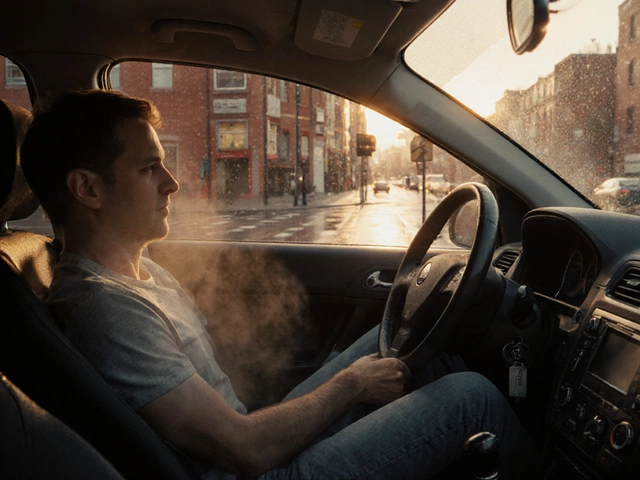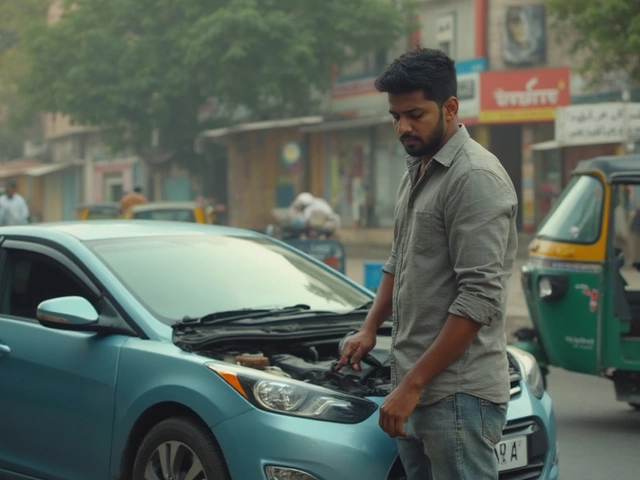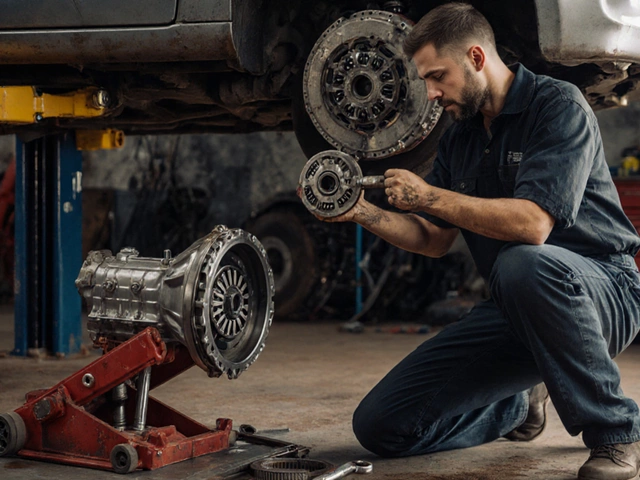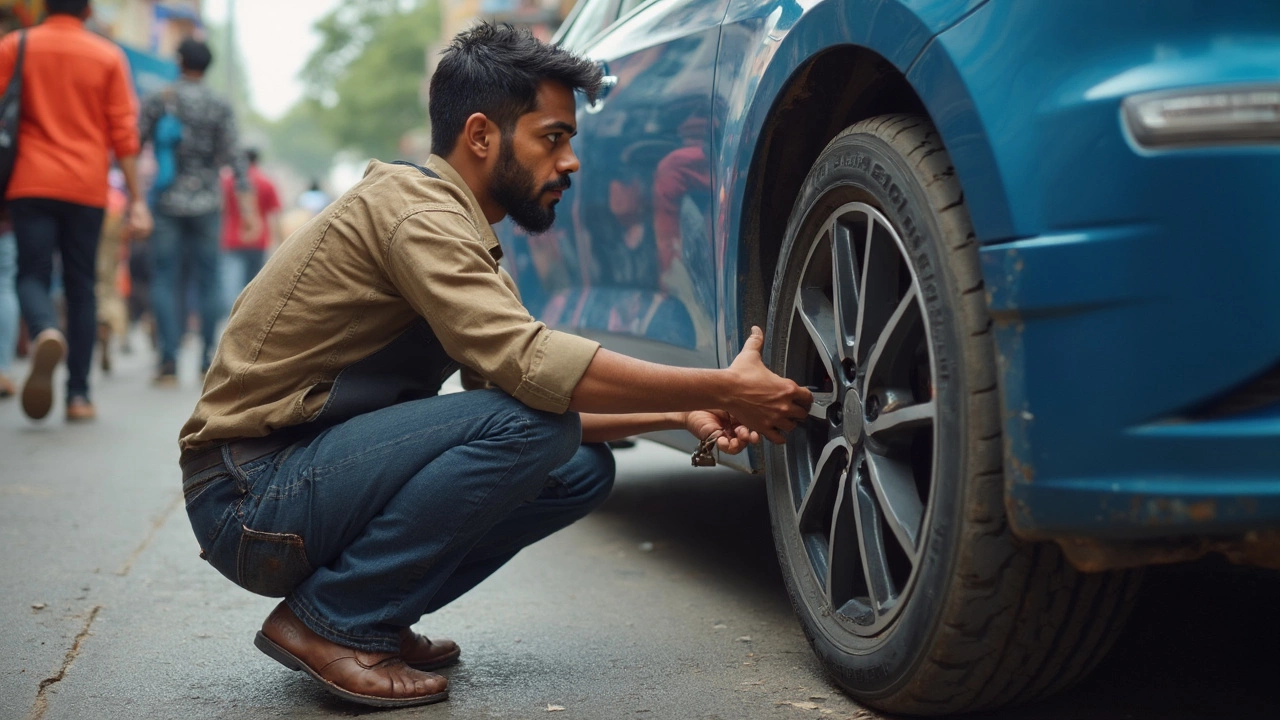
Not all brake pads are put through the same kind of punishment. Your car’s front brake pads handle most of the stopping power, which means they usually wear out much faster than the ones in the back. If you start hearing weird noises, feel some vibrations, or sense a loss in braking power, it's natural to wonder which set is at fault.
The fastest way to guess? Look at your driving habits. Have you been hitting the brakes hard, hauling heavy stuff, or driving in stop-and-go traffic? Odds are, it's probably the front pads crying for help. But there's more to spotting which brakes need attention than just guessing.
You don’t need tons of tools or gear to figure this out—sometimes just your ears, a flashlight, and a keen eye are enough. The next sections will lay out exactly what to watch, listen for, and feel, so you won’t waste time or money swapping the wrong pads. Don’t worry, you don’t have to jack up the car or take the wheels off just to get started.
- Why Front and Back Pads Wear Differently
- Clear Signs It’s the Front Pads
- What Tells You It’s the Rear Pads
- Checking Pads Yourself (No Lifting Required)
- Pro Tips to Prevent Uneven Wear
Why Front and Back Pads Wear Differently
Most folks don’t realize it, but your car’s braking force gets split unevenly between the front and back wheels. When you hit the brake pedal, the weight of your car shifts forward. That means the front brake pads have to work way harder to slow you down—about 60% to 80% of stopping power comes from those front wheels. This isn’t just for cars; trucks, SUVs, virtually every road vehicle works this way.
Here’s a quick comparison to make it easier to see the difference:
| Axle | Brake Force Handled | Typical Wear Rate |
|---|---|---|
| Front | 60-80% | Faster (25,000-40,000 miles) |
| Back/Rear | 20-40% | Slower (40,000-60,000 miles) |
This difference is why most people end up replacing front pads one or even two times before touching the rear ones. The design of the braking system plays a role, too. Most cars have bigger discs and calipers up front, made to take that extra heat and pressure. Rear pads, on the other hand, are usually smaller and handle less load.
Also, some modern cars with electronic stability or automatic braking use the rear brakes more for stability, but the front pads still wear out first in normal driving.
If you drive mostly in the city with constant stop-and-go traffic, you’ll notice the front pads wearing even faster. Towing, hauling heavy cargo, or driving downhill a lot all add even more stress on the front brakes. Bottom line: your driving style and your vehicle’s weight distribution have a big say in which pads wear down first.
Clear Signs It’s the Front Pads
Most of the time, it’s your front brake pads doing the real work. That’s because your car’s weight shifts forward when you hit the brakes, giving the front pads up to 70% of the stopping job. No wonder they usually go first.
So, how do you know when it’s the front pads acting up? Look for these clues:
- Noisy Braking Up Front – If you hear a squeak, grind, or screech from the front wheels while braking, it’s probably the front pads getting to the wear indicators, or even metal-on-metal if you’ve waited too long.
- Shaky Steering Wheel – A vibrating or pulsing steering wheel when you hit the brakes almost always points to worn or uneven front pads, sometimes paired with a warped front rotor.
- Dirtier Front Rims – Front pads create more brake dust, so if your front wheels always look filthier than the rear ones, your front pads are working overtime—or grinding themselves to nothing.
- Longer Stopping Distances – When front pads are cooked, you might notice it takes more pedal pressure or distance to stop safely, because you’re missing that main stopping power up front.
Other small giveaways: The car pulls to one side when braking, or there’s a weird smell from the front wheels—usually a burned pad if it’s gotten really bad.
Here’s something you don’t see every day—a quick breakdown comparing how often front vs. back pads need changing on some popular cars:
| Car Model | Front Pads (Avg. Miles Before Replacement) | Rear Pads (Avg. Miles Before Replacement) |
|---|---|---|
| Toyota Camry | 30,000 | 55,000 |
| Honda Civic | 28,000 | 50,000 |
| Ford F-150 | 35,000 | 65,000 |
Numbers bounce around depending on driving style and loads, but you can see the front pads usually wear out way sooner.
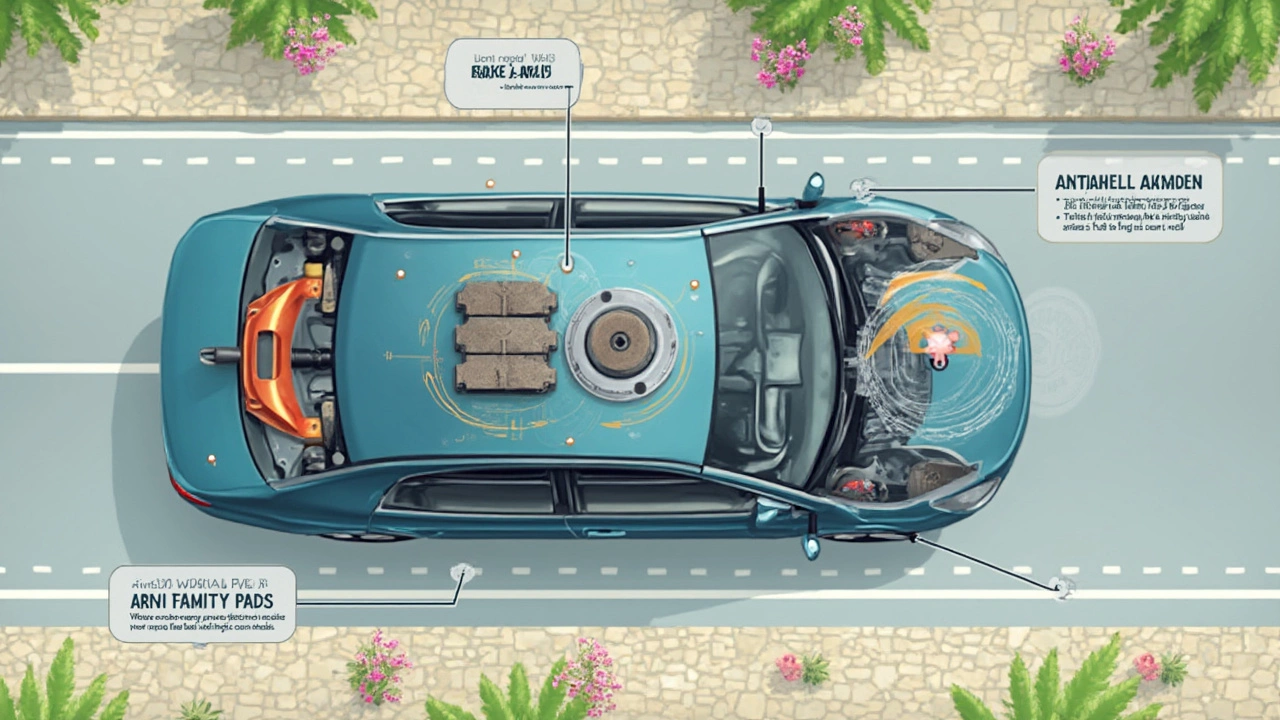
What Tells You It’s the Rear Pads
Rear brake pads aren’t just along for the ride—they play their own role, especially during steady stops and when your car uses electronic parking brakes. Figuring out if it’s the back pads going bad takes a slightly different approach since the symptoms are sometimes sneaky and less dramatic compared to the front.
- Brake pads making grinding or squealing sounds from the rear wheels usually mean the pads are nearly finished. The sound might be fainter than from the front and it often gets louder when you reverse.
- If your handbrake or electronic parking brake feels mushy, doesn’t grab quickly, or needs to be pulled up high, that’s a classic sign of worn rear pads. In some newer cars, a yellow or red dashboard warning light will even pop on when the sensors on the rear pads get low.
- During braking, does your car’s back end feel loose or drift slightly? Worn rear pads can cause weird handling, especially in rain or when stopping on a hill.
- Visually, you can usually peek through the wheel spokes to spot the pad thickness. Rear pads are typically thinner to begin with, so if they look paper thin, it’s time for a swap.
- If your car has drums in the back instead of discs, you’ll notice a scraping or hollow sound. But for disc rears, a metallic grinding noise is the warning—it means the pad is already worn through to the metal.
Here's a quick comparison of common symptoms for easy reference:
| Symptom | Front Pads | Rear Pads |
|---|---|---|
| Louder squeal or grind | Yes, especially when braking hard | Yes, but often when reversing or using the handbrake |
| Handbrake issues | Rare | Common |
| Loose rear feel when stopping | No | Yes |
| Warning light for pad wear | Sometimes | Becoming more common in modern cars |
Tip: When checking, remember that some SUVs and trucks wear out rear pads faster than the front, especially if they tow stuff or use fancy brake setups. If you notice even a hint of any of these signs, it’s smart to tackle the job before it turns into an expensive fix.
Checking Pads Yourself (No Lifting Required)
You don’t have to be a pro mechanic to check on your brake pads. Most sets can be inspected right through your wheel spokes with a small flashlight. Here’s how you can spot what’s going on with your brakes without jacking up your car or heading to the shop first.
Here’s a simple way to check both front and rear pads from outside the car:
- Turn your steering wheel all the way to one side. This opens up the view to the front brake calipers and pads through the spokes of your front wheels.
- Shine a flashlight through the rim. You’ll see the fat metal disc (the rotor) and, hugging it, the brake pad. Make sure you’re looking at both the inner and outer pads, since they can wear differently.
- Look for thickness. Most new brake pads start at about 10-12 mm. If what’s left is less than 3 mm (approximately the thickness of two stacked pennies), it’s time to get new ones.
- For rear brakes, repeat the flashlight peek through the rear spokes. If you can’t see as well, try using your phone camera with the flash on to get a pic inside.
- Don’t forget to listen: If you hear a high-pitched screech even at low speeds, that’s the built-in wear indicator scraping the rotor—a clear sign your pads are on their last legs.
If you’re still unsure, look for these visual clues:
- Front brake pads usually show more wear than the rear due to handling over half the stopping force.
- Dustier or darker front wheels often hint at worn front pads—brake dust builds up faster with thinning pads.
- Uneven pad thickness between the left and right sides can signal a stuck caliper.
Here’s a quick reference of normal brake pad lifespan differences for most cars:
| Pad Location | Average Lifespan (miles) |
|---|---|
| Front | 25,000–40,000 |
| Rear | 40,000–60,000 |
If you spot thin pads or uneven wear, it’s best not to wait—changing pads early keeps your rotors in good shape and saves you cash in the long run.
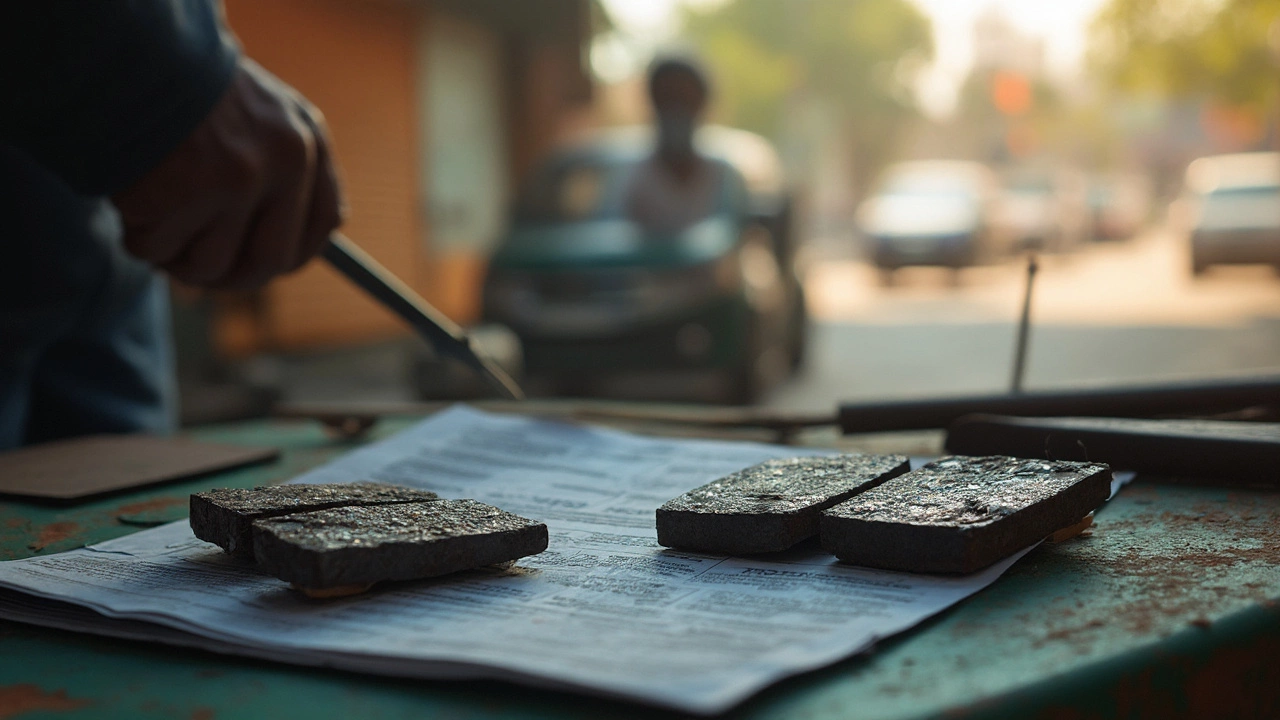
Pro Tips to Prevent Uneven Wear
Want your brake pads to last longer and avoid costly surprises? A little awareness and some easy habits make a huge difference—even if you know nothing about car repairs.
- Rotate your tires without skipping brake checks. Every time you rotate your tires (usually every 6,000–8,000 miles), take a peek at the pads. Uneven wear often shows up early if you check both ends routinely.
- Don’t hammer the brakes. Hard or sudden stops put way more stress on the front pads, wearing them out faster. Instead, slow down gradually when you can—your wallet will thank you.
- Flush your brake fluid on schedule. Old, dirty brake fluid can mess with how pressure is applied to all four corners, causing some pads to drag or wear faster. Most cars need a brake fluid change every two to three years. Check your owner’s manual for the exact timeline.
- Replace pads and rotors in pairs per axle. Swapping just one brake pad on either the front or back can throw off balance, making the new pad wear out quicker. Always do both left and right pads—and rotors if they’re scored or thin.
- Watch for sticky calipers and slides. If a caliper gets stuck, one pad can wear down way faster than the other. This is super common on older cars or those driven in wet or salty areas. Listen for squeals or grinding and get sticky parts checked out quick.
If you’ve got a heavy right foot or haul stuff often, expect the front pads to need swapping more regularly. Being smart with maintenance and keeping an eye on how your car brakes saves cash and makes driving a lot safer.

